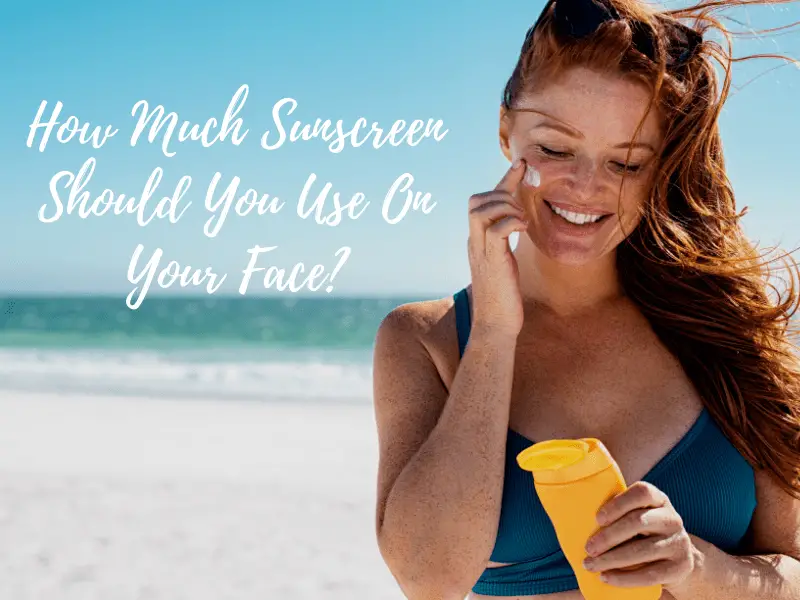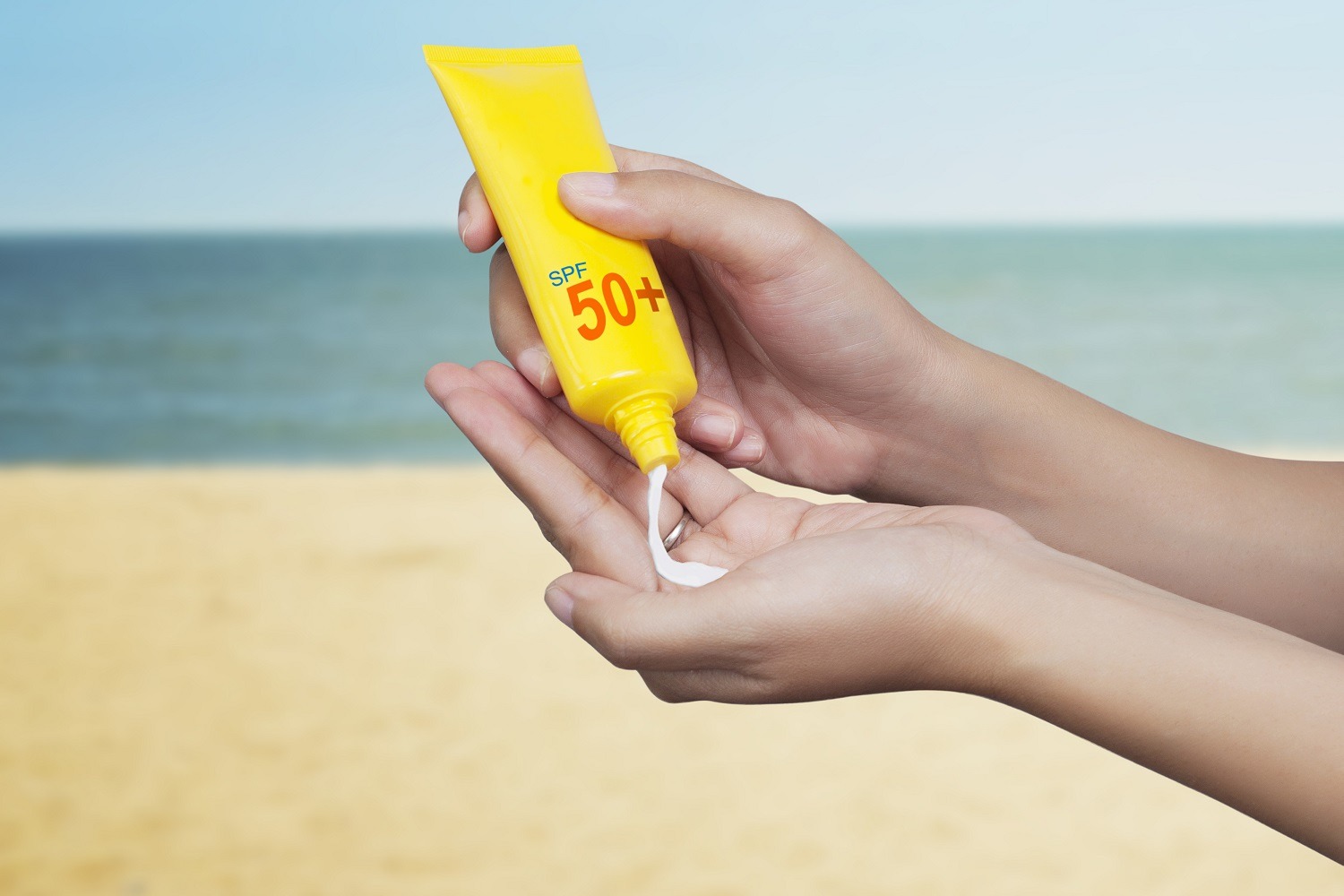
How Much Sunscreen Should You Use On Your Face?
It can be challenging to know exactly how much sunscreen to use on your face, as too little won’t give you needed protection, and too much would be a waste of product.
To know exactly how much sunscreen to use, we turned to the experts at the American Academy of Dermatology (AAD) and the United State Federal Drug Administration (FDA).
The AAD and FDA have guidelines on how much sunscreen to apply to your face. They recommend using one-half teaspoon (two milligrams) of sunscreen on your face.
Using too little sunscreen can let the harmful UV rays through and cause damage that can show up on your face years later.
Table of Contents
Sunscreen Can Help Protect You From Skin Cancer
Unfortunately, One In Five Americans Will Develop Skin Cancer In Their Lifetime. The Deadliest Form Of Skin Cancer, Melanoma, Will Claim 20 American Lives Every Day.Using Sunscreen Can Help To Prevent The Damage That UV Rays Cause To Your Skin And Can Lead To Skin Cancer.
It Is An Easy Enough Action To Take To Protect Yourself For Years To Come. Sunscreen Is Readily Available, And A New Bottle Of Sunscreen Has A Shelf Life Of Three Years, So Go Ahead And Buy The Large Bottle.

Infographic from American Academy of Dermatology
What Does The SPF Number In Sunscreen Mean?
SPF stands for Sun Protection Factor. The number associated with an SPF, such as SPF30, tells you how long the sun’s UVB rays will take to redden your skin with sunscreen applied compared to the amount of time it would take to redden your skin if you did not have sunscreen on your skin.
For example, if you used an SPF30 product and applied it correctly, it would take you 30 times longer to burn than if you did not use any sunscreen at all.Remember that it is important to use the proper amount and to apply it correctly. If you only use half of the sunscreen amount, you will only get about half the protection you could be getting if you used the recommended amount.
It is essential to use the amount of sunscreen recommended on the product. If you apply more than recommended, you don’t get more protection from UV rays, but if you apply less, then you will get significantly less protection. Sunscreen works because it has a limiting effect. It limits the number of UV rays that get through to your skin.
What Does The SPF Number In Sunscreen Mean?
SPF stands for Sun Protection Factor. The number associated with an SPF, such as SPF30, tells you how long the sun’s UVB rays will take to redden your skin with sunscreen applied compared to the amount of time it would take to redden your skin if you did not have sunscreen on your skin.
For example, if you used an SPF30 product and applied it correctly, it would take you 30 times longer to burn than if you did not use any sunscreen at all.Remember that it is important to use the proper amount and to apply it correctly. If you only use half of the sunscreen amount, you will only get about half the protection you could be getting if you used the recommended amount.
It is essential to use the amount of sunscreen recommended on the product. If you apply more than recommended, you don’t get more protection from UV rays, but if you apply less, then you will get significantly less protection. Sunscreen works because it has a limiting effect. It limits the number of UV rays that get through to your skin.
What Number SPF Should You Use?
For day-to-day use, the AAD suggests you should wear sunscreen with an SPF of at least 30. It should be a broad-spectrum sunscreen that protects against both UVA and UVB rays.
It should also be water-resistant, which helps when you are sweating. If you spend time outdoors, use a product that has an SPF of 60 or greater. One of the reasons that it is suggested wearing a higher SPF, is that most people do not put on as much sunscreen as they should, and the higher SPF number can help, at least a little, to compensate for that.

How To Apply Sunscreen To Your Face
It is tempting to squirt a dollop of sunscreen into your hand and then massage it over your face, but that can end up with some places on your face having the sunscreen thicker than others.
It is best to start by squirting the recommended one-half teaspoon of sunscreen into your hand, but then distribute it by evenly dotting it on your face. Once it is all in place, then massage it in. This gives you more of an even coverage on your face, and less rubbed into the palms of your hands.
If you are using a spray-on sunscreen, shake it well before spraying. Don’t spray or spritz it onto your face, but spray it onto your hands and then apply it to your face.
Here is a handy video that demonstrates how to apply sunscreen: How to apply sunscreen
How Often Should You Apply Sunscreen To Your Face?
If you are a homebody and don’t leave the house, you could go without sunscreen. But if you take the dog for a walk, drive in your car, go to get groceries, or do yard work, you should apply sunscreen.
The back of your neck and the tops of your ears are two places that we tend to ignore and can get easily sunburned. Don’t forget those areas.
If you wear makeup, apply sunscreen first, then add the makeup over the top. Sunscreen should be applied about 15 minutes before you go outside and then reapplied every two hours.
What Else Can You Do To Protect Your Skin From UV Rays?
John’s Hopkins Medicine tells us that sunscreen is one of the best and easiest ways to protect your skin’s appearance and health at any age.
They go on to say that everyone needs some exposure to the sun to produce vitamin D, but prolonged unprotected exposure to the sun’s ultraviolet rays can cause damage to your skin, eyes, and immune system.
Sunscreen should be your first line of defense against these harmful rays. The second is your choice of clothing. Lightweight and long-sleeved shirts and pants help to cover your skin and protect it.
Dark colors offer more protection than light colors. Add sunglasses to your arsenal. Look for glasses that have UV protection, and those with large frames or are wrap-around will also give more protection.
Wide-brimmed hats are a simple and effective way to cover your face and neck. Don’t forget your feet, either. Shoes that cover your feet will help protect them, but if you do go barefoot or wear sandals, remember to put sunscreen on your feet.
Here are suggestions on What to wear to protect your skin from the sun when you will be outside.

Infographic from American Academy of Dermatology
Final Thoughts
The American Academy of Dermatology tells us that sunscreen offers protection from sunburn, early skin aging, and skin cancer. In addition to using sunscreen, the AAD also recommends:
- Seek shade when appropriate, remembering that the sun’s rays are strongest between 10 a.m. and 2 p.m. If your shadow is shorter than you are, seek shade.
- Dress to protect yourself from the sun by wearing a lightweight long-sleeved shirt, pants, a wide-brimmed hat, and sunglasses when possible.
- Use extra caution near water, snow, and sand as they reflect the damaging rays of the sun, which can increase your chance of sunburn.
- Get vitamin D safely through a healthy diet that may include vitamin supplements. Don’t seek the sun.
- Avoid tanning beds. Ultraviolet light from the sun and tanning beds can cause skin cancer and wrinkling. If you want to look tan, you may wish to use a self-tanning product, but continue to use sunscreen with it.
- Check your birthday suit on your birthday. If you notice anything changing, itching, or bleeding on your skin, see a board-certified dermatologist. Skin cancer is highly treatable when caught early
Did You Know?
Have you ever wondered what causes your skin to burn? Most of us realize that it happens, but this video will help you understand: What Causes Sunburns?





